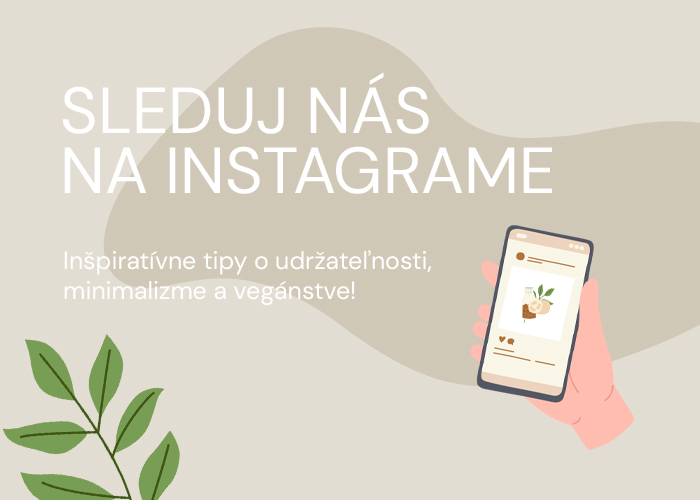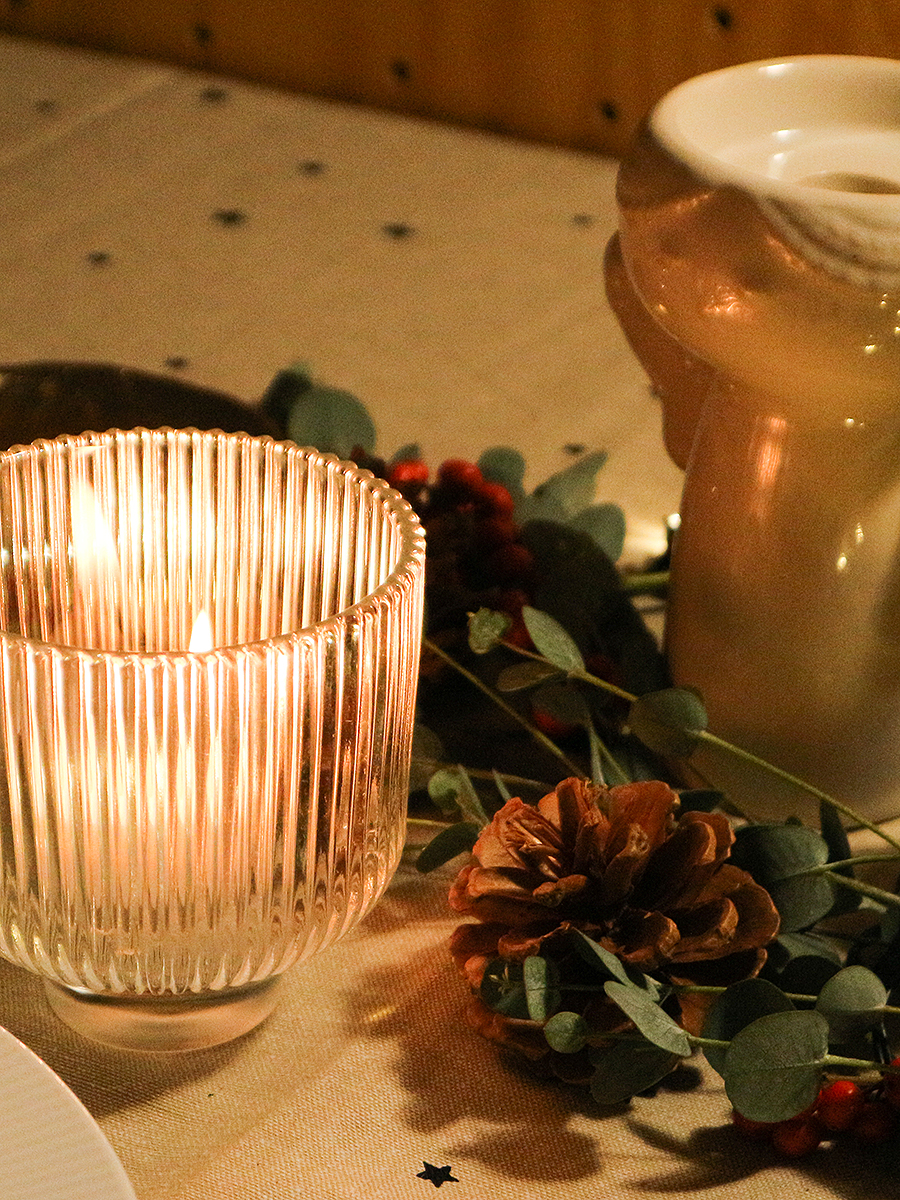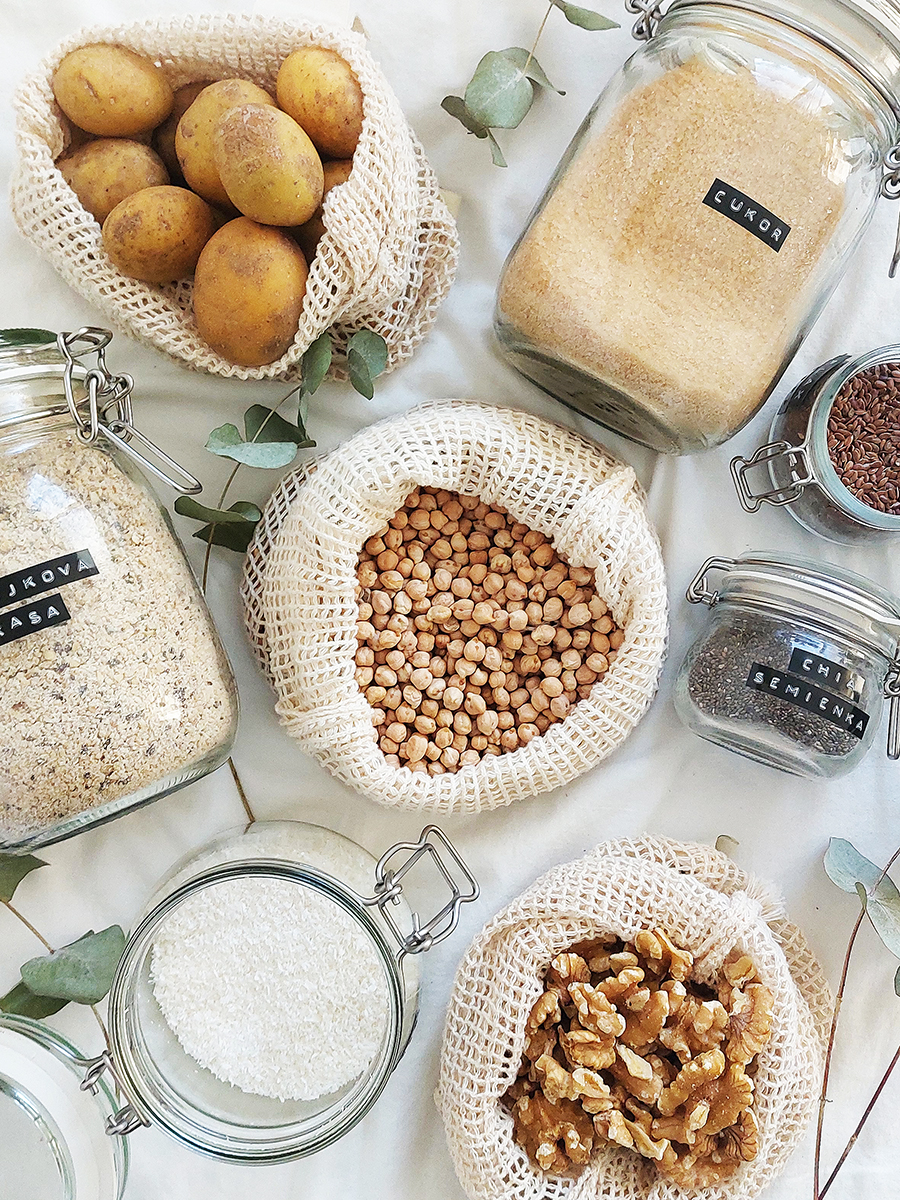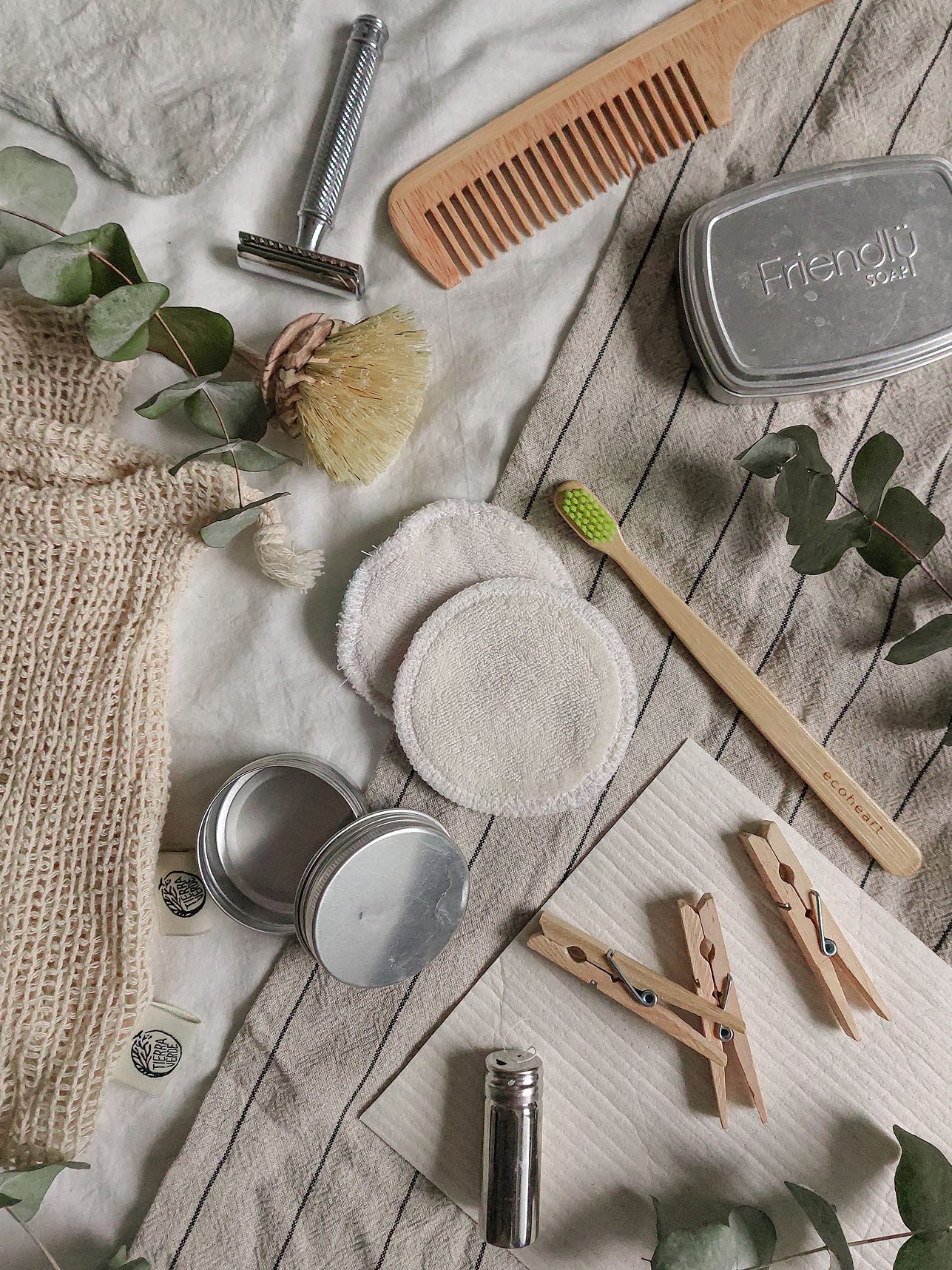
Over the past year, the interest in environmental protection has increased several times. People are more aware of the importance of reducing our plastic consumption and waste production; and many companies are responding to it – package free shops open across the country where you can buy groceries and cosmetics without unnecessary packaging, you can buy a substitute for traditional produce bags for fruit and vegetable in a regular supermarket, and large institutions commit to finding better substitutes for plastic straws or disposable cuttlery.
In this context, the word sustainability has been said many times – seeking sustainable alternatives, creating sustainable homes, building sustainable living. Sustainability and zero waste have much in common; and yet it’s not the same.

What is sustainability
There is no precise definition of sustainability. If you look at this from different angles, you will get a slightly different answer each time. However, as the most universal we consider the oldest and original definition given at the 1992 United Nations Conference on Environment and Development in Rio de Janeiro:
Therefore, sustainability can be understood as a way of life, where our common and basic needs are still fulfilled, that is, we don’t feel any shortcomings and we lack nothing, but at the same time we don’t endanger the quality of life of the generations that come after us.
If we look at the second half of the last century, when the plastic revolution – when they started to make from plastic everything from household goods to clothing – surely this period cannot be described as sustainable; because today we see results. The oceans and seas are full of plastic waste, micro-plastics are already present in our bodies and plastic will never break down on the landfills. We threaten ecosystems, which in turn threaten us. Not to mention how our children would suffer if we didn’t stop doing that.

Sustainability vs. Zero Waste
Many people also understand as zero waste the use of alternatives that are made from wood, glass, metal, fabric and so on – that is, from renewable sources that we can recycle or decompose in nature without any waste. That is why we can call them sustainable – when we plant a tree, so that we can make wood, for example, into a cutting board, once it’s destroyed and worn out, it can be completely decomposed in nature, and will serve as a fertilizer for another young tree.
But zero waste doesn’t automatically mean sustainability. For example, look at beeswax wraps for food, which has become very popular in recent months. On the one hand, they’re an excellent substitute for cling film because they are reusable, and since they are only a piece of cloth and beeswax, they can be fully decomposed in nature. However, what happens if all people around the world throw away their cling film in the bin and want to buy a wax wrap? Demand will increase several times – and mass exploitation of bees and hives will begin to get as much wax as possible. This is likely to go to the extreme, when beekeepers take away all the honey and burn the hive, causing the entire bee communities to die. And that is no longer sustainable.
A second example is the use of soap nuts as a substitute for conventional laundry detergents. They seem like a complete miracle – a nut that naturally contains a saponin that can wash clothes without any chemicals and can be composted after use? Soap nuts are growing in the Himalayas, and as demand for them is not yet high, people living in the area collect them only after the nuts have fallen to the ground and sell them on the market. But it’s not their primary source of money, so many nuts will go unnoticed. However, when interest increases, there will be a need for more land for planting in bulk, but mainly for people who will do everything possible to collect as many nuts as they can (and we can only hope that it won’t end up as fast fashion production and as how the people in the developing countries who are sewing such garments work), not to mention how much pesticides and chemicals will be needed to grow the trees as expected.

However, this doesn’t mean that you should not use wax wraps or soap nuts. These can also be, or even are sustainable, when compared to cling film and laundry detergent. But when it comes to achieving sustainability, we still have gaps, and many of them are not yet completely filled.
Sustainability is the search for alternatives that are simple and easy to imply in everyday life, do not harm the environment, animals and ecosystems, while not adversely affecting the future and upcoming generations. We must realize that there is no one on earth as an individual who can think only of themselves – we must look at how our behavior affects the planet, flora and fauna and how it will affect our children. Because even they deserve to live in purity, peace and beauty.

V priebehu posledného roka vzrástol záujem o ochranu životného prostredia niekoľkonásobne. Ľudia si čoraz viac uvedomujú, že je dôležité znížiť našu spotrebu plastov i produkciu odpadu; a mnohé spoločnosti na to reagujú – po celej krajine sa otvárajú bezobalové obchody, kde nakúpite potraviny i kozmetiku bez zbytočných obalov, v bežnom supermarkete kúpite látkové náhrady klasických plastových vreciek na ovocie a zeleninu a veľké inštitúcie si dávajú záväzky nájsť lepšie náhrady za plastové slamky či jednorazový riad.
V tejto súvislosti sa začalo skloňovať slovo udržateľnosť — hľadanie udržateľných alternatív, vytváranie udržateľných domovov, budovanie udržateľného života. Udržateľnosť a zero waste majú mnoho spoločného; a predsa to nie je to isté.

Čo je udržateľnosť
Neexistuje žiadna presná definícia, čo znamená termín udržateľnosť. Keď sa na túto problematiku pozriete z rôznych uhlov, zakaždým dôjdete k mierne odlišnému výsledku. Avšak za najviac univerzálnu považujeme najstaršiu a pôvodnú definíciu, ktorá odznela na Konferencii OSN o životnom prostredí a rozvoji v roku 1992 v Rio de Janeiro:
Udržateľnosť preto môžeme chápať ako spôsob života, kedy sú naše bežné a základne potreby stále naplnené, teda nepociťujeme žiadne nedostatky a nič nám nechýba, ale zároveň takto neohrozujeme kvalitu života generácií, ktoré prídu po nás.
Ak sa pozrieme na druhú polovicu minulého storočia, kedy bola plastová revolúcia – teda keď z plastu začali vyrábať úplne všetko od obalov cez potreby do domácnosti až po oblečenie – toto obdobie určite nemôžeme označiť ako za udržateľné; pretože dnes vidíme výsledky. Oceány a moria sú plné plastového odpadu, mikroplasty sa nachádzajú už aj v našich telách a na skládkach sa plast nikdy nerozloží. Ohrozujeme ekosystémy, ktoré následne ohrozujú i nás. Nehovoriac o tom, ako by trpeli naše deti, keby sme s takýmto správaním neprestali.

Udržateľnosť vs. Zero Waste
Pod bezodpadovým životným štýlom mnohí ľudia chápu aj používanie alternatív, ktoré sú vyrobené z dreva, skla, kovu, tkaniny a podobne – teda z obnoviteľných zdrojov, ktoré vieme recyklovať alebo sa v prírode bez stopy rozložia. Práve preto ich vieme nazvať udržateľnými – keď zasadíme strom, aby sme z dreva mohli vyrobiť napríklad dosku na krájanie, len čo bude zničená a opotrebovaná, vie sa v prírode úplne rozložiť, a poslúži ako hnojivo pre ďalší mladý strom.
Lenže zero waste automaticky neznamená udržateľnosť. Vezmime si napríklad voskové obaly na potraviny, ktoré sa v posledných mesiacoch stali veľmi populárnymi. Na jednu stranu sú výbornou náhradou potravinovej fólie, pretože sú znovu-použiteľné, a keďže sú iba z kúsku látky a včelieho vosku, v prírode sa stopercentne rozložia. Avšak čo sa stane, keď všetci ľudia na celom svete hodia svoju potravinovú fóliu do koša a budú si chcieť kúpiť voskový obal? Dopyt vzrastie niekoľkonásobne – a začne hromadné vykorisťovanie včiel a úľov s cieľom získania čo najväčšieho množstva vosku. To s veľkou pravdepodobnosťou zájde až do extrému, kedy včelári odoberú všetok med a úľ vypália, vďaka čomu zahynú celé spoločenstvá včiel. A to už nie je udržateľné.
Druhým príkladom je používanie mydlových orechov ako náhrady za bežné prostriedky na pranie. Zdajú sa byť ako hotový zázrak – orech, ktorý prirodzene obsahuje saponín, ktorý dokáže vyprať oblečenie bez akýchkoľvek chemikálií a po použití ich je možné skompostovať? Mydlové orechy rastú v Himalájach, a keďže dopyt po nich ešte nie je vysoký, ľudia žijúci v tejto oblasti ich zbierajú až po tom, čo orechy spadnú na zem, a predávajú ich na trhu. No nie je to ich primárny zdroj peňazí, teda mnohé orechy ostanú bez povšimnutia. Avšak keď záujem vzrastie, odnesie si to jednak zem, ktorá bude používaná na sadenie vo veľkom, ale hlavne ľudia, ktorí budú robiť všetko pre to, aby pozbierali čo najviac orechov (a môžeme len dúfať, aby to neskončilo ako s produkciou rýchlej módy, respektíve tým, ako pracujú ľudia v rozvojových krajinách, ktorí šijú takéto oblečenie), nehovoriac o tom, koľko pesticídov a chemikálií bude potrebných na to, aby stromy rástli podľa predstáv.

To však neznamená, že nemáte používať voskové obaly alebo mydlové orechy. Aj tie môžu byť, respektíve sú udržateľné, ak ich porovnáme s potravinovou fóliou a pracím práškom. Ale čo sa týka dosiahnutia udržateľnosti, stále máme medzery, pričom mnohé z nich ešte nevieme úplne vyplniť.
Udržateľnosť je hľadanie alternatív, ktoré sú jednoduché a ľahko implikovateľné do bežného života, nepoškodzujú životné prostredie, živočíchy a ekosystémy, a zároveň negatívne neovplyvňujú budúcnosť a nasledujúce generácie. Musíme si totiž uvedomiť, že na Zemi nikto neexistuje ako jednotlivec, ktorý môže myslieť ba sám na seba – musíme hľadieť na to, ako naše správania ovplyvňuje planétu, flóru a faunu a aký bude mať dopad na naše deti. Pretože aj tie si zaslúžia žiť v čistote, pokoji a kráse.





